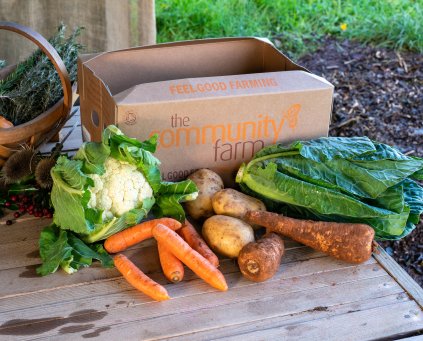Join us at The Farm in 2024 Find out how to get involved!
About Us
- Home
- About Us
- News from The Farm
- Butterfly abundance!

Search
Butterfly abundance!
- Details
- Nature-friendly farming
- Volunteering
- wildlife

As a nature-friendly farm, we are always looking for opportunities to increase the quality of habitats across The Farm, from the formal flower borders, to the hedgerows and margins, the grassland to the pond - ensuring there is food, water, shelter and nesting sites for the wonderful diveristy of wildlife that call our farm home. This includes what we choose to plant, and where - we're focussing in increasing the diversity of wildflowers in our hedgerow margins, as well as how we manage the land - like scything the margins and cutting hedgerows on a rotational basis, ensuring that we always have a mixture of habitats at different levels of maturity, which will in turn, benefit different species, and we're delighted that these methods are having an effect...
As many of you will know, we've been carrying out monthly surveys of bumblebees on the farm over the last 6 years (March to October). We use the findings to help inform how we manage the marginal areas of The Farm, increasing the number and variety of nectar-rich flowers throughout the season, and joining up areas by creating 'wildlife corridors' which provide links, ensuring the bumbleebees and other wildlife can move freely and safely to areas rich in food, and always find shelter.
This year however, with the support of a local specialist, we have taken our surveying a step further and started weekly Butterfly Surveys from April to end of September. The season started with much enthusiasm and excitement on our part, but a very gentle level of activity from the winged wonders themselves! Our early counts were in the single figures, featuring a few of the earliest butterflies - the small handful of species which over-winter as adults in this country, including the Peacock Butterfly and the Brimstone - two iconic and beautiful species.
As the season progresses we've been recording an increase in the variety of butterflies we're seeing, as well as the numbers of individual insects - we're yet to see whether our first July count, with a whopping 136 butterflies across 12 different species (mostly Gatekeepers, Ringlets and Meadow Browns) can be topped...watch this space!
We do, of course, seem popular with a certain couple of species - the Large and Small Whites - a.k.a. Cabbage Whites - they seem to be just as big a fan as we are of our lovely brassica crops, and are irresistably attracted to the abundance of kales, cabbages and kohl rabi flourishing in our fields (which is why we have to mesh our whole crop to protect it from the voracious appetites of their tiny caterpillar offspring!). They also pose a challenge to us as surveyors as they are notriously flighty and difficult to accurately tell apart.
The surveys are all carried out by amazing team of enthusiastic volunteers, most of whom had very limited experience and knowledge of surveying or identifying bumblebees or butterflies beforehand - a fantastic example of where enthusiasm and a willingness to learn alongside each other can go hand in hand with citizen science - contributing hugely to the work of the farm, whilst also helping to build the national picture via the UK Butterfly Monitoring Scheme.
If you're interest to get involved in surveying wildlife on the farm, contact Emmy or why not try your own surveys at home or in your local community by taking part in The Big Butterfly Count.
By Emmy Wurmli, Engagement Leader at The Community Farm
Our Most Popular Boxes
Do we deliver to you?
We deliver to Bristol, Bath, Chew Valley, Weston-Super-Mare, Frome and plenty of places in-between!
The Community Farm
Denny Lane
Chew Magna
Bristol BS40 8SZ
Our Outlets
Saturdays 10am-2pm
The same wonderful, organic produce that goes into our veg boxes is available for sale at The Farm's Veg Shed.
The Community Farm is a not-for-profit organisation, registered with the Financial Conduct Authority as a Community Benefit Society.
Our registration number on the Mutuals Public Register is 31018 R. Our companies Number at Companies House is IP031018
© 2024 The Community Farm











